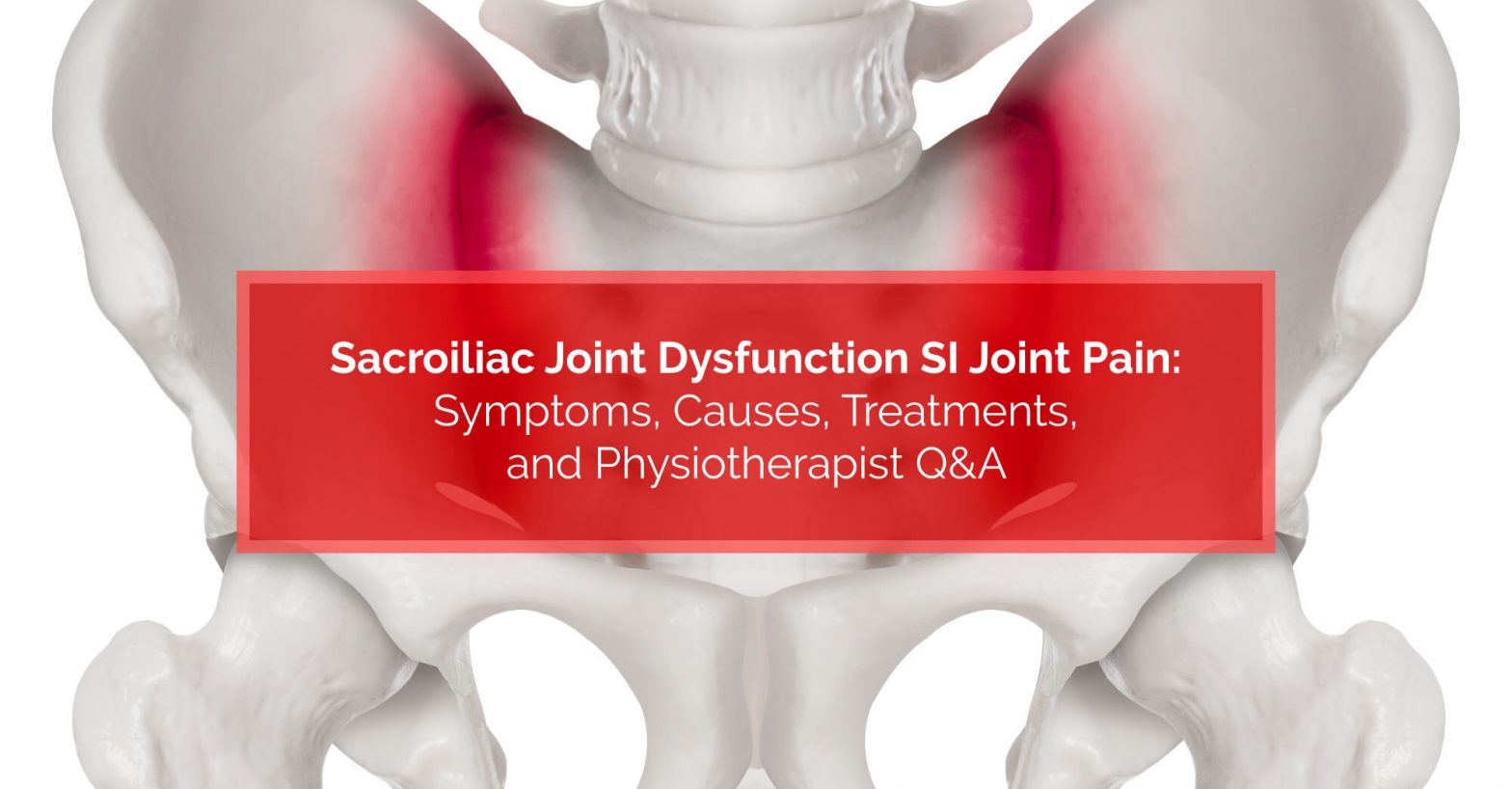Heel Pain Treatment Options for Lasting Relief...
Key Highlights: Heel pain treatment is best for plantar fasciitis,…
Read More
Posted by Dr. Scott Wilson | 01-May-2022
Lower back pain is one of the most common health conditions experienced by both men and women around the world. A common cause of lower back pain is Sacroiliac Joint Dysfunction. It’s a condition that results in a sharp, stabbing pain that radiates from the hips and pelvis up to the lower back and down into the thighs. This is often referred to as SI joint pain. If you’ve had similarly sharp, stabbing and intense lower back pain, it could be because of Sacroiliac Joint Dysfunction. To help you better understand whether or not what you’ve been experiencing is SI joint pain, here’s a quick overview of the related symptoms, causes, and treatments.
The Sacroiliac (SI) is the part of our body where the spine meets the pelvis and the area between these two bones is the SI joint. It’s connected by soft tissues including tendons, ligaments, and muscles. The Sacroiliac acts as a shock absorber capable of taking loads of heavy, compressive force commonly experienced while walking, running, jumping, bending, etc. An inflamed Sacroiliac joint causes intense pain, which is referred to as sacroiliitis or SI joint pain. This inflammation can be caused by various factors including trauma, pregnancy, lumbar pathology, or lumbar fusion surgery.
SI joint pain caused by Sacroiliac Joint Dysfunction or inflammation is similar to what’s experienced with degenerative hip disease, hip bursitis, lumbar disc herniation, or pinched nerves. Sacroiliac Joint Dysfunction symptoms can vary significantly for each person, depending on the underlying cause. However, common symptoms include severe lower back pain found on only one side that gets worse with prolonged standing or sitting. Other symptoms include pain in the gluteus (buttocks) and radiating pain, tingling or even numbness in the legs, hips, and groin. This pain also makes it harder to find a comfortable position while trying to sleep. Of course, a lack of sleep further weakens the body and creates other challenges.
In most cases, treatment for Sacroiliac Joint Dysfunction and SI joint pain is focused on managing symptoms, non-surgically, through specialized physiotherapy and strengthening of surrounding muscles, joint mobilization, manual massage, dry needling, anti-inflammatory medications, and steroid injections.
Physiotherapy is one of the most effective treatments for SI joint pain and Sacroiliac Joint Dysfunction. A Physiotherapist can provide low-impact exercises for stretching and strengthening key muscles along with information and education on how to maintain proper body mechanics throughout the day. They can also perform joint mobilization, manual massage, and, in some cases, dry needling to help mobilize soft tissues and relax tight muscles to help relieve joint pain.
Modifying your diet can also help with reducing inflammation that causes SI joint pain. There are also a number of joint pain supplements that can help with improving the overall health of the SI joint. Your doctor may recommend prescribed medication and non-surgical therapies if you still have severe SI joint pain after continuous physiotherapy and self-care treatments. Or, if a chronic condition is causing the pain. Some of these options include:
Surgery for Sacroiliac Joint Dysfunction is considered only as a last resort. It’s often recommended only after continuous physiotherapy, medications, or other interventions have failed or if the pain is chronic. Surgical options might include sacroiliac joint fusion, minimally invasive surgery, and open surgery. Sacroiliac joint fusion is the most common surgery for SI joint pain. This procedure eliminates all movement at the sacroiliac joint by fusing together the ilium and sacrum. Of course, the specific surgery recommended by your doctor will depend on what’s actually causing the Sacroiliac Joint Dysfunction.
Answer: There are several causes of Sacroiliac Joint Dysfunction related pain. The intense pain experienced by patients often originates from nerve irritation, improper alignment of the joint, fluid buildup, or even from micro-tears in the ligaments responsible for stability. Other common causes of Sacroiliac Joint Dysfunction and SI joint pain include:
Answer: If you’re suffering from SI joint pain, you should stay away from activities that have a heavy impact on your back and hips. This includes things like running, jumping, skipping, or even labor-intensive jobs. Even prolonged periods of standing or sitting can significantly aggravate your SI joint-related pain. Weak abdominal, gluteal, and spinal muscles can also play a pivotal role in worsening your SI joint pain. Of course, your symptoms may be different from someone else’s. So, you should pay attention to what you are or have been doing when your symptoms flare up.
Answer: One of the keys to relieving SI joint pain is loosening up the muscles attached to your pelvis and sacrum. These muscles can become tight due to a sedentary lifestyle and various other factors. When these muscles become tight, they can lead to changes in your movement patterns. These changes can put significantly more stress on your SI joint and intense lower back pain. Options for loosening these muscles and/or relieving inflammation include:
These options can help relieve SI joint pain and can also be highly beneficial in reducing your risk of developing Arthritis and other chronic joint diseases.
Answer: Sacroiliac Joint Dysfunction and SI joint pain are also commonly for women during pregnancy. During pregnancy a woman’s body produces more specific hormones such as relaxin. Relaxin is the hormone that helps in widening the pelvis during childbirth, which makes the joints more elastic. To get relief from SI joint pain while pregnant, try to avoid all aggravating activities, maintain a healthy pregnancy weight, and perform exercises that help stabilize your pelvis. If you’re experiencing SI joint pain while pregnant, you should consult an experienced Physiotherapist that specializes in pelvic health.
Sacroiliac Joint Dysfunction and SI joint pain are not uncommon. However, if left untreated, they can lead to other health challenges. Fortunately, with a proper physiotherapy program, including stretching and strengthening, and some dietary modifications, you can manage your symptoms and get back to leading a happy and productive life.
If you’re struggling with SI joint pain, contact us today and let us show you why, at Physiomed, Healthier Starts Here.

Key Highlights: Heel pain treatment is best for plantar fasciitis,…
Read More
Key Highlights: Back pain relief exercises can effectively relieve back…
Read More
Key Highlights: Benefits of massage therapy include pain relief for…
Read More
Key Highlights: Custom made orthotics are specialized medical devices tailored…
Read More
Key Highlights: Frozen shoulder therapy is an effective approach to…
Read More
Key Highlights: Tight hamstrings are influenced by issues like muscle…
Read More